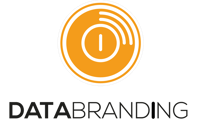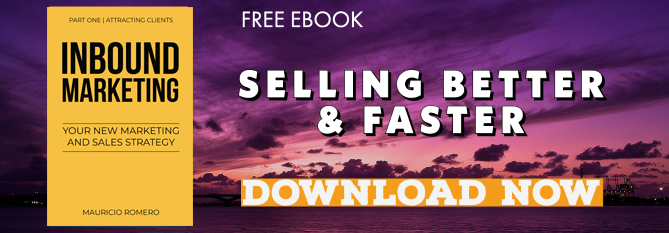Most people think that selling online is some sort of technology business. They are wrong. It's a model based on content. If you are an entrepreneur, you must have realized that the world has changed; selling isn't that easy anymore, customers are in control and we must change the way we advertise and sell our product or services to them.

A company's webpage has become a new kind of "sales representative" who works 24 hours a day, 7 days a week, 365 days a year. And this is the case not only for major companies who sell products directly to their regular buyers with their huge e-commerce sites, it's also the case for companies that sell their products and services to other companies as well.
Selling Online
Regardless the size of your company, wether it's a small or an expanding one, your compass should always point towards the attraction of new prospects. How is this done?
The formula seems to be very simple:
- Direct visitors traffic to your site
- Have people fill out forms when requesting for more information
- Give these prospects a follow-up with nurturing e-mail campaigns until they feel they are ready to buy from you and then
- Have a sales representative contact them
Increase Traffic
To increase traffic, techniques such as SEO, SEM, PPC (Adwords), social networks, public relations and advertising campaigns are carried out. Being on the internet with these techniques is a very interesting option, since people who search for your product online, are already interested in receiving your help so you can solve their problem or need. Basically, they are people who raise their hands and say: "I'm interested! What else can you tell me about your product or service?" Sounds pretty easy, right?
The hardest part of this strategy is that it isn't that easy for your page to appear among the first 3 search results recommended by search engines such as Google. And if you are a small or medium size business and you're trying to buy those first places with Adwords, it's very likely that you'll be competing with very large companies and thus, budgets. That's why the use of social networks is a great solution for small and medium size companies.
People are looking for information during the first stage of their online shopping cycle. Which is why in order to fully develop all the techniques mentioned above, what you must have on your site is content. Content that has to do with what customers are looking for:
- How does it work / solves my problem?
- How and where do I buy it?
- What's the right price for it?
- Who can better solve my problem?
So a site needs a lot of information about the products themselves, as well as pages that help the customer know:
- How to use them
- What are they for
- Reviews
- Comparisons
- Industry information, etc.
Turning Traffic Into Prospects
People love to receive more information, specialized information, on what they are interested in. You can offer this information to them in exchange of having them fill in contact forms. By doing so, they will voluntarily share their contact information with you. What is it that they want? They are saying "make me an expert buyer, I want to find the best deal, I want to know more about the product". That's why in this second stage, you also have to create really helpful content for them. Up to this moment you are still not selling a thing, you are trying to help that person solve a problem or need.
Prospects Administration
Once your site has generated interest in what your company does, on the services and products that it offers, and you have the client's contact information, you should then try to start a conversation with them in order to give them more advise and to begin to understand more about their needs.
We usually do this based on nurturing campaigns. Like we mentioned before, we give them even more information. The real art of this stage lies in creating relevant and within-context information. Otherwise, it will not have the impact that we are waiting for. We must always keep in mind it should help our prospect.
Offer
It isn't until we know who the person is, what this person's needs are, that we can make an offer that is:
- Attractive enough
- Right on time
So it motivates this person to move forward and become a client. An online buying process can take longer that you'd expect. Clients won't try to contact a sales representative until they have enough information. It isn't until this point that the sales representative's skills come in handy. Clients would rather speak to those representatives that show an interest in really helping them solve their problem than to those who are just trying to close a deal.
As we said at the beginning of this article, the client has changed. Clients are now more educated on the information that they need in order to buy our products or services than ever. If we don't educate them ourselves, they might get wrong ideas about us and about how to buy from us.
Assessment and Improvements
Last but not least, you must evaluate your efforts based on statistics so you can work on improvements. This marketing model, which is actually a constant and progressive measurable methodology, is called Content Marketing or Inbound Marketing. Having a website can no longer mean to just upload a printed brochure. It must be about offering information and to become an education center for clients. It's to be there so they can find what they are looking for.
It makes perfect sense: an educated client can better recognize the value of what you do and will be willing to pay well for it. Not a bad strategy, right?
If you want to learn more about this strategy, you can give us a call, read our blog posts or download our free ebook:

